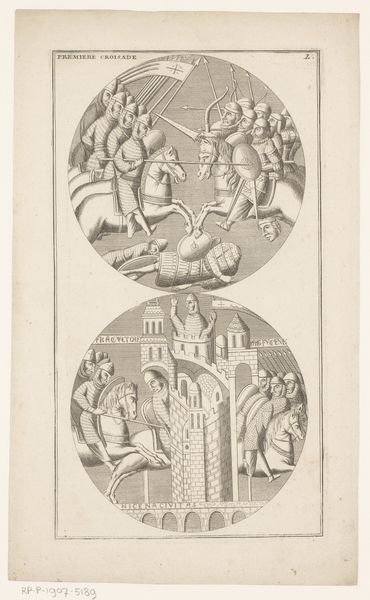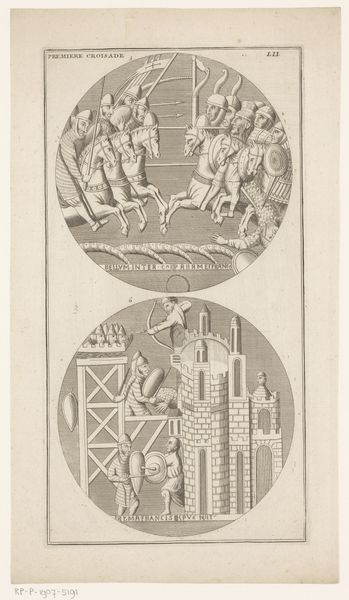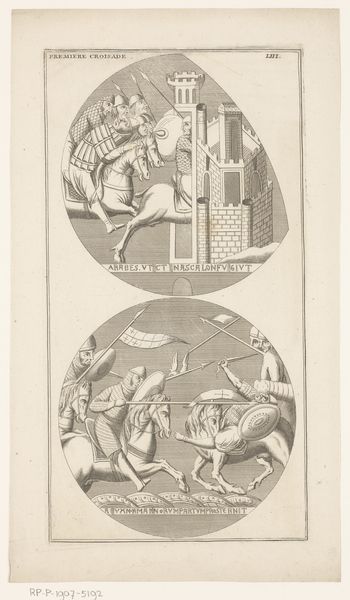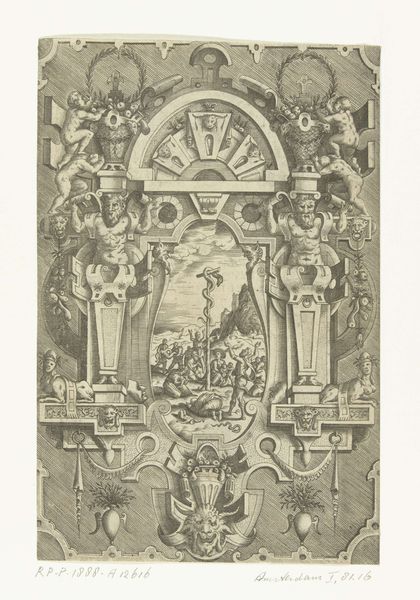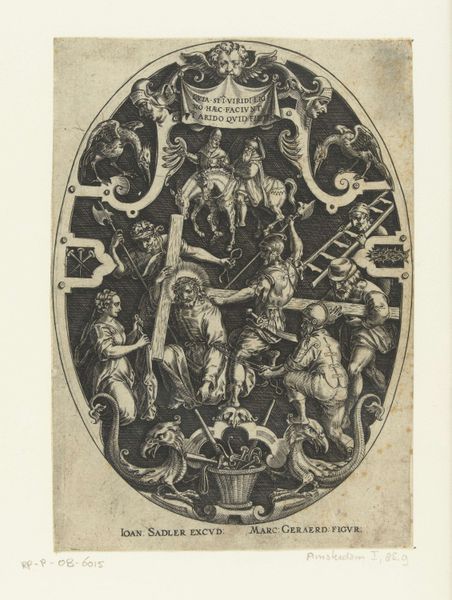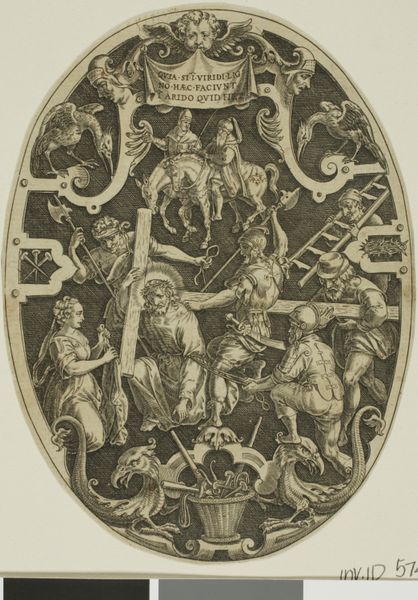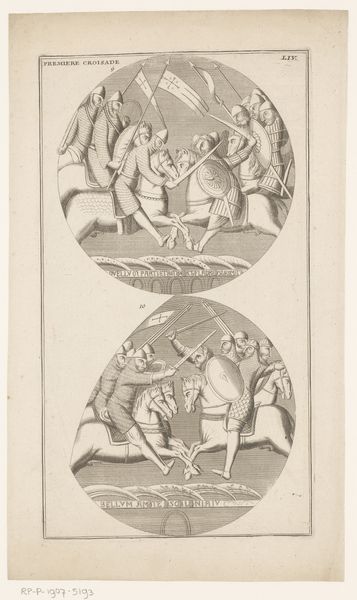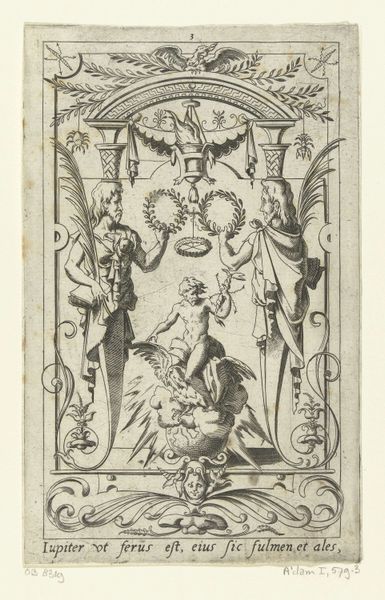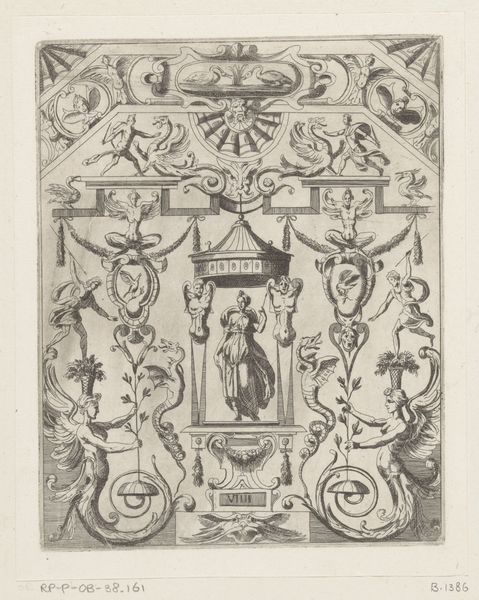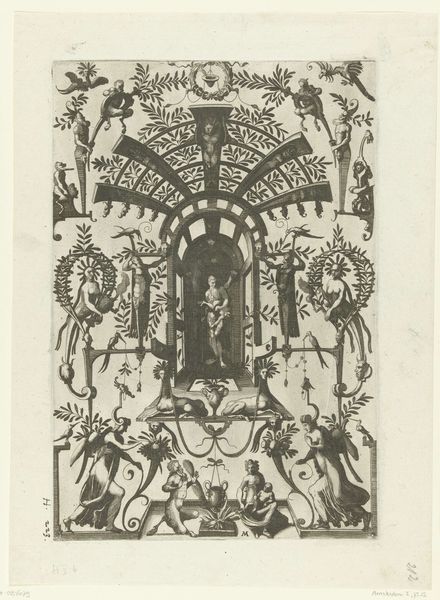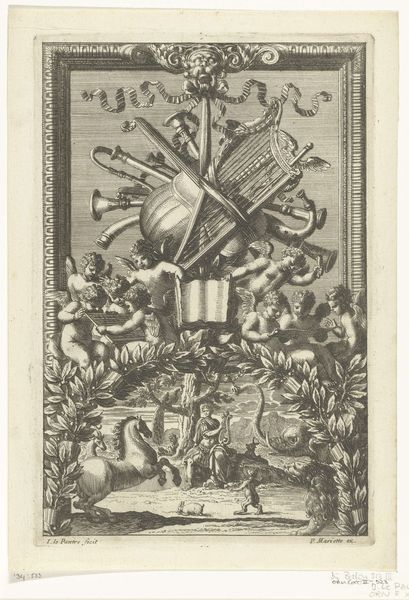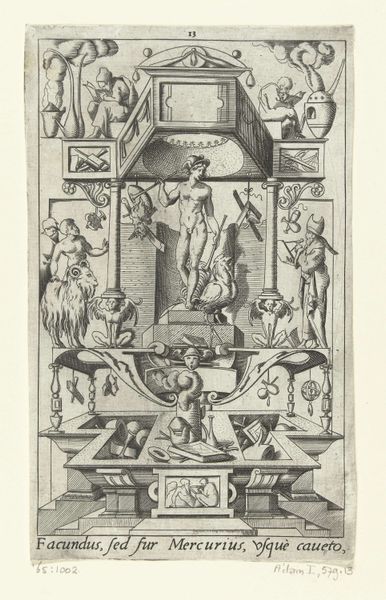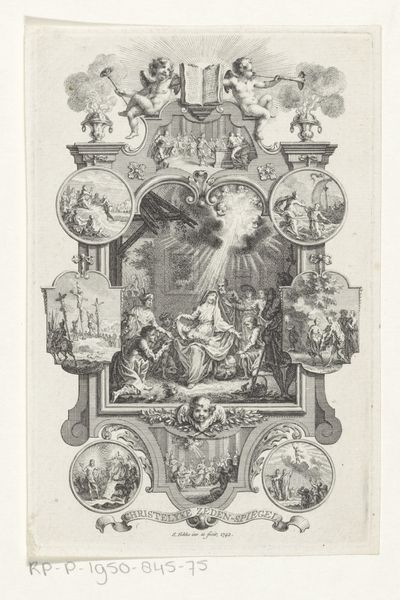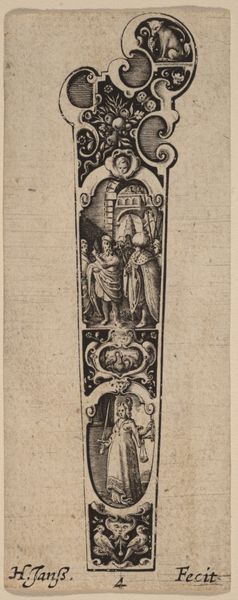
print, engraving
#
medieval
#
narrative-art
#
baroque
# print
#
figuration
#
line
#
history-painting
#
engraving
Dimensions: height 327 mm, width 183 mm
Copyright: Rijks Museum: Open Domain
Editor: So, this is "Twee scènes uit de eerste kruistocht," or "Two scenes from the First Crusade," an engraving by Dominique Sornique, created between 1729 and 1733. It depicts, well, scenes from the First Crusade. I'm struck by the way these events are framed in these circular vignettes, almost like looking back through time. How do you interpret this work, especially considering its historical context? Curator: What I see here isn't simply a depiction of historical events, but a lens through which 18th-century Europe understood the Crusades. It’s crucial to remember that history isn’t neutral. Sornique, consciously or not, is participating in a tradition of representing the 'other,' constructing a narrative of Christian heroism against, implicitly, a Muslim enemy. Do you see any hints of that kind of bias here? Editor: I suppose in the depiction of the battles… they’re positioned as attackers, I see. So, you're saying it is more about how the 18th century viewed these events? Curator: Exactly! The formal elements, the Baroque style and line engraving, lend a sense of order and drama. It's a way of containing the perceived chaos and otherness of the Crusade narratives, molding them into a digestible and heroic story for its intended audience. Consider how these images might have reinforced contemporary European identities. Editor: I never really considered it that way, the artist’s hand in constructing a whole narrative with inherent biases. Curator: It's a crucial aspect of historical art analysis. Art doesn’t just reflect; it actively shapes our understanding of the past, often reinforcing power structures. The Crusades, in particular, have a long and complex legacy when it comes to European identity. Editor: I’ll definitely be thinking about that next time I look at any historical artwork! Thank you. Curator: My pleasure. Keep questioning the narratives, and who is telling them. That’s where the real insights lie.
Comments
No comments
Be the first to comment and join the conversation on the ultimate creative platform.
